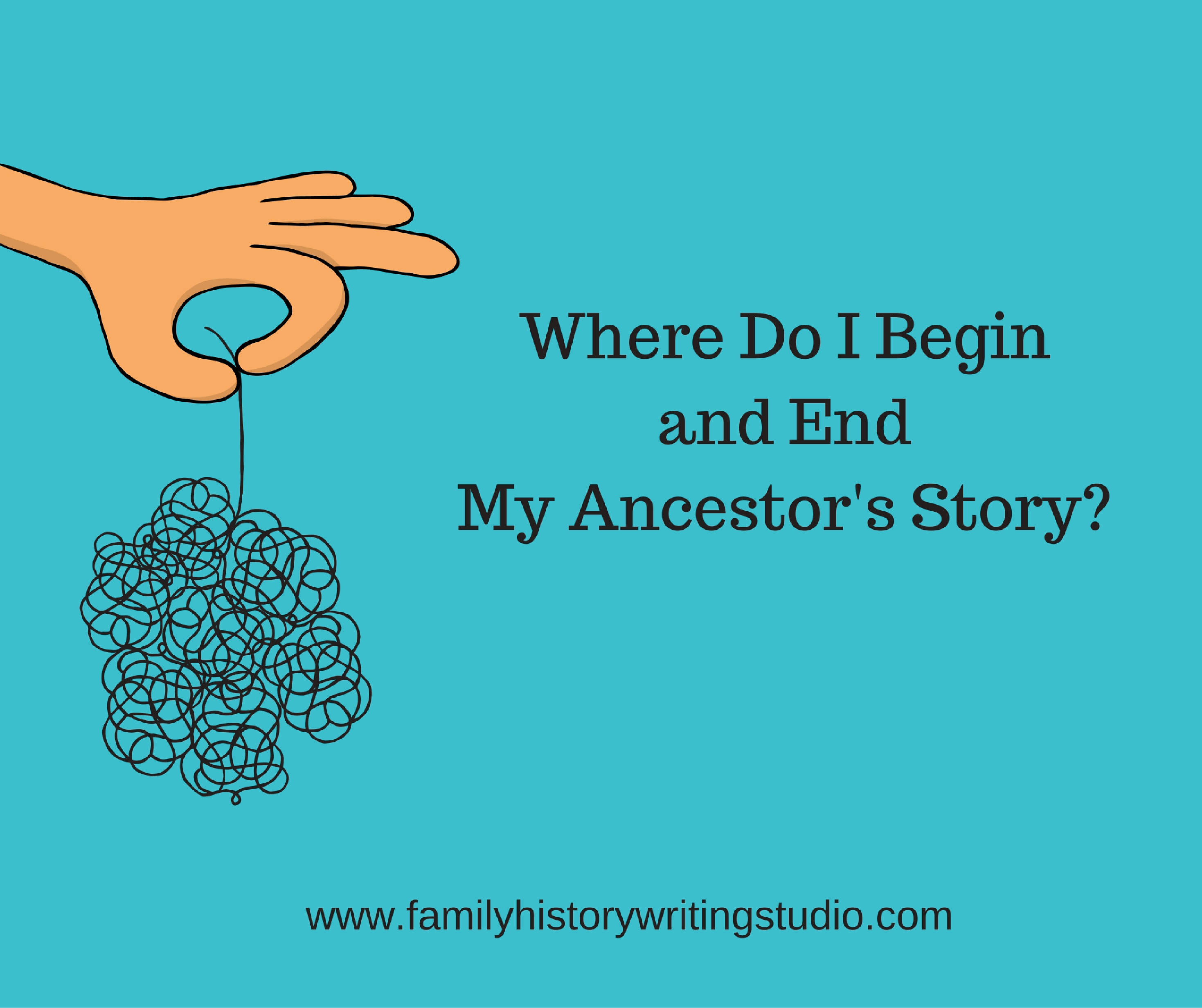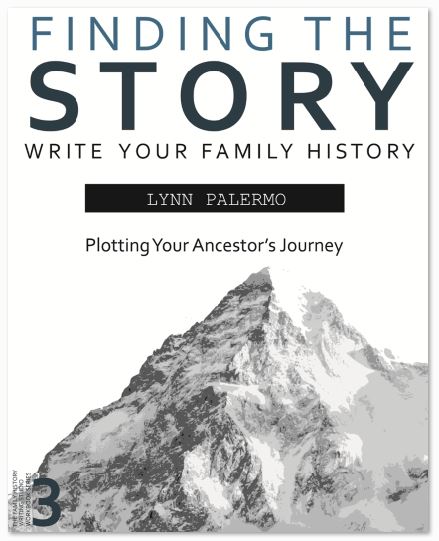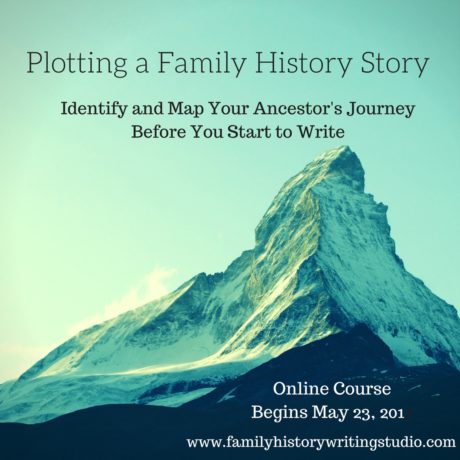Without a great beginning, a beginning that draws the reader in and hooks them your story is dead. The beginning becomes especially important in a family history narrative. We all know how difficult it can be to get our relatives to read about their family history. They may not have a particular interest in their history; maybe you forced them into reading this story, perhaps some guilt is involved. Regardless, how they got to that first page you want to be sure they stay, and they stay because they are intrigued.
The beginning is the start of your story up until your first plot point. The first plot point being the event that causes your ancestor to take action and set them on a path to their goal. This first plot point is often referred to as the inciting incident or the first turning point.
There is no tried and true answer to where to begin. Throw out the idea that your family history must start at the beginning of a life, in chronological order. Look at your research, your ancestor’s story and find a moment, event, question or surprise that you feel will grab your reader’s attention. Your story’s beginning should set the tone and mood, establish a point of view and make the author’s voice heard (that’s you).
A Checklist for the Beginning of Your Story
- A Hook – the opening lines, the first moments of your story that grabs the reader’s attention, that captures your reader’s curiosity and propels them to keep reading.
The hook can come in a variety of ways:
- Start with a question – put a question in your reader’s minds. Make them wonder what does this have to do with my ancestor, my family history. How is my ancestor going to get out of this situation?
- Begin at a crucial moment – Choose a critical juncture in your family history, an event that captures your reader’s attention and will encourage them to learn what happens next.
- Create an interesting picture – Start your family history with description that helps your reader’s paint a picture of their ancestor’s setting. Put them in a scene, give them some action and your reader will be drawn in.
- Introduce an intriguing character– A character that grabs your reader’s attention will encourage them to stay to find out more. Let your ancestor’s personality take the lead.
- Start with an unusual situation – Show us your ancestor in a unique situation that makes your family take notice, and they’ll be sticking around to see what it’s all about.
With each passing sentence, you want to continue to build, coaxing the reader to stay with you. Each paragraph should build on the last, pulling them deeper until they can’t turn back. The last sentence of each paragraph should be a catalyst to the next. We all remember a book that we couldn’t put down. The authors of these books excelled at creating great beginnings that drive you forward into the story.
Besides the hook, the start of your family history story should offer the reader other elements that will help capture their attention and curiosity.
- Introduce the Protagonist – Introduce us to the Protagonist Ancestor if you haven’t done so in the hook. Assist the reader in establishing a relationship with your primary character.
- Establish the Setting – The reader should be able to visualize where the story takes place, area, time and even season.
- Introduce the Antagonist – Introduce us to the Antagonist Ancestor ( if there is one). Keep it brief, don’t give us everything up front.
- Introduce a Story Question – Present the reader with a challenge that your ancestor faces. Have your readers asking the question, How will they overcome this challenge?
- Theme – Introduce, your reader to the theme of your family history story. Give them something to think about, what does your family history mean?
What Your Beginning Shouldn’t Include
- Avoid backstory or flashbacks. Stay in the present story. There is plenty of time to add historical information later.
- Too much description, particularly of the central character, give us just enough to paint a picture, not a long drawn out description. Stick to unique and very specific details. It’s important to remember, in this case, more is not necessarily better.
- Don’t introduce too many characters.
- Don’t change point of views between characters, too confusing this early on. If you are writing your family history from the point of view of two ancestors, let the reader get comfortable with one point of view before changing.
- Too many locations, keep your beginning limited to one or two locations. Ancestors travelled but let’s not have them in a dozen different places in the first chapter.
- Don’t spoon-feed the reader, giving everything they need to know about their family history upfront. You’re writing this story to share a family history in a compelling read. Make them hang with you until the end, don’t share everything in the first chapter.
- Prologues – much debated, but personally I dislike books that start with a prologue because they are often a place to dump backstory and it often feels lazy. It’s a personal choice; prologues are best used to raise a question in the reader’s mind about the main character.




